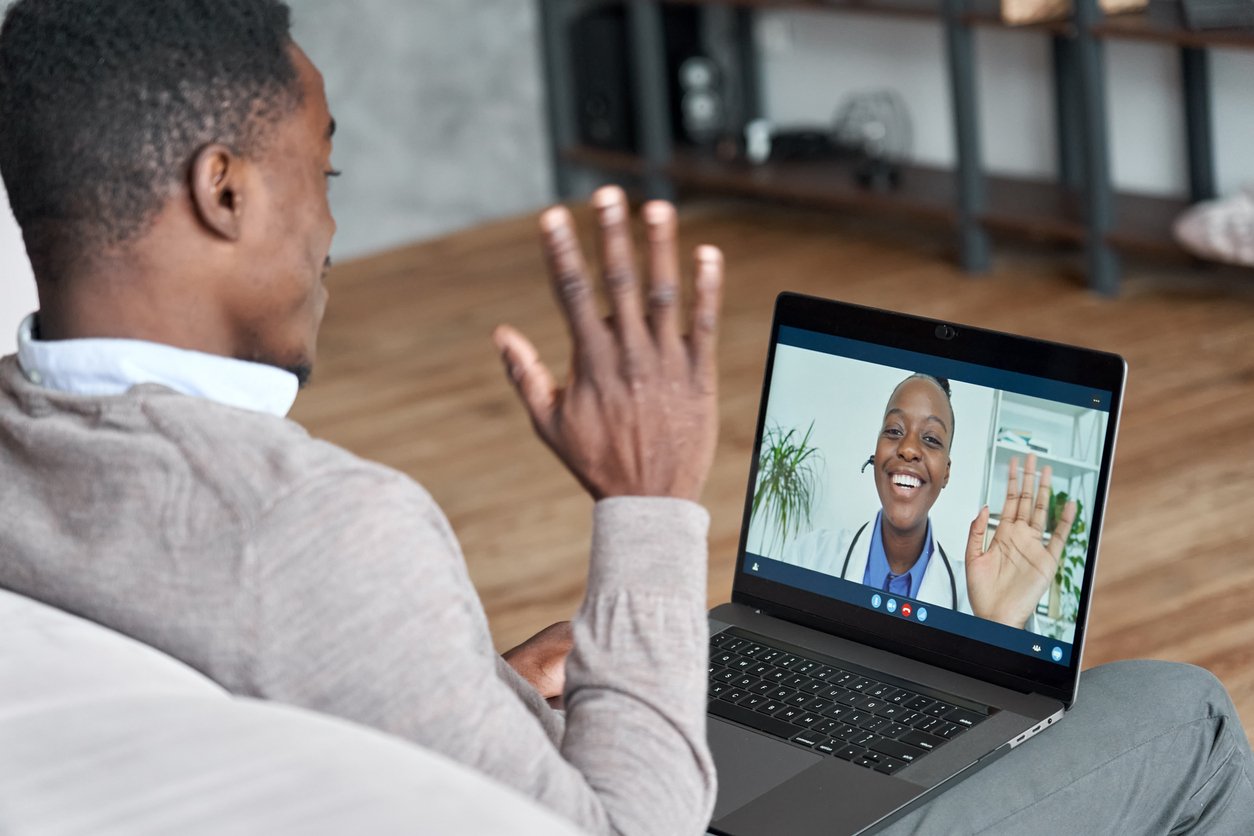In 2020, telehealth quickly became a solution for doctors to meet with patients while limiting COVID-19 exposure. While the COVID-19 vaccines have made many services more accessible, telehealth remains a significant feature for those seeking medical care.
Let’s review the tools healthcare facilities need to ensure their technology supports the increased use of video conferencing.
What is telehealth?
Telehealth—also known as telemedicine—is the variety of technologies used to deliver or support medical care. While the term is very broad, it includes making video calls to remote providers, patients, and their families. It has become the preferred method during the COVID-19 pandemic for working with patients that do not need a physical examination, helping to lower exposure rates between patients and providers.
Additional benefits of telehealth
- Greater access to care
People who live in rural areas, do not have reliable transportation, or are house-bound greatly benefit from meeting with healthcare providers from their homes. - Streamlined doctor visits
A telehealth appointment can help patients save time. People can potentially avoid missing an entire day off of work if they don’t have to drive to their doctor’s office, wait in the lobby, and finally meet with a physician. Another benefit is quickly incorporating another person into the call, such as a specialist physician or interpreter. - Improved quality of care
Patients are often more relaxed and comfortable opening up to healthcare providers when they’re at home. Doctors have noticed more reliable patient follow-through with implementing recommendations.
Tools and technology for telehealth
All participants need three core elements during telehealth visits:
- A secure and dependable internet connection
- Hardware such as a computer, tablet, or smartphone
- Software to access a video conferencing platform
High-quality video streaming is a significant factor in successful telemedicine visits. A poor digital connection between a doctor and their patient can result in frustration and miscommunication.
Choosing a video conferencing platform
In addition to a strong internet connection, healthcare providers need a reliable video conferencing platform. There are many video conferencing platforms for healthcare providers to choose from, such as:
- Zoom
- Cisco Webex
- VSee
- Vidyo
- Microsoft Teams
- Mend
- Epic
- me
- Athena Health
- Amwell
When choosing a platform, healthcare organizations should prioritize flexibility, ease of use, and security. The platform needs to be compatible with multiple devices, such as desktop computers, laptops, tablets, and cell phones. An intuitive user interface makes the telehealth experience accessible to patients who are less familiar with modern technology. The fewer clicks a patient needs to join the video conference, the greater attendance will be. While the platform should be simple to navigate, it should also protect sensitive patient information.
Security tools for telehealth
To maintain HIPAA compliance, healthcare providers must ensure all service providers—including cloud data storage—adhere to strict security protocols. Personally identifiable information must be encrypted and secure at all times. Access controls such as secure firewalls, password-protected video meetings, and electronic IDs can help IT managers block hackers and prevent them from tampering with patient data.
Streamlining remote communication by adding an interpreter to a video conference
One of the most significant benefits of using telehealth is meeting with multiple people without having to be in the same room. Not only does this limit exposure to COVID-19 and other illnesses, but better communication is also achieved. If the patient is limited-English proficient, you can add an interpreter to your telehealth visit via CyraCom Connect, CyraCom’s telehealth interpretation solution.
CyraCom Connect allows you to speak with your limited-English proficient patients with the help of a trained CyraCom interpreter. CyraCom remote interpretation offers 200+ audio languages and 25+ video languages. CyraCom Connect works with many popular video conferencing and telehealth platforms, including the 10 platforms listed above.
Are you looking for interpretation for telehealth?
If you are new to CyraCom, please reach out to us at getstarted@cyracom.com to sign up. If you’re a current client, please contact your account manager to add CyraCom Connect to your services.








